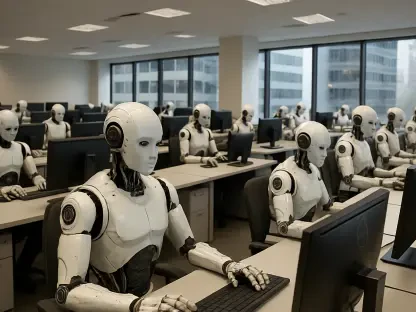The role of Human Resources (HR) has evolved dramatically in contemporary organizations from being limited to traditional tasks like recruitment, payroll, and compliance to becoming key drivers of organizational culture and development. This shift underscores the necessity for both employees and HR professionals to master the skill of “learning to learn.” In today’s rapidly changing business landscape, instilling a culture of continuous learning has become paramount for organizational success.
The Transforming Role of HR
Historically, HR responsibilities were confined to administrative and logistical functions. However, modern technologies and the dynamic nature of the workplace have transformed HR into a strategic partner integral to organizational growth. By fostering continuous learning, HR ensures that employees adapt, innovate, and remain competitive. This evolution from traditional tasks to a more strategic focus highlights the transformative power HR holds in modern organizations.
HR professionals are no longer just gatekeepers of company policies but have become champions of employee development and engagement. The transition from administrative roles to key players in shaping corporate culture necessitates a fundamental rethinking of HR practices. By promoting continuous learning, HR helps employees acquire new skills crucial for long-term organizational success. This proactive approach supports not only individual growth but also aligns with broader business objectives, enabling organizations to stay agile in a fast-paced environment.
Understanding “Learning to Learn”
The concept of “learning to learn” emphasizes the development of mindsets and skills required to adapt to new information, refine abilities, and embrace change. This approach transcends traditional education models, encouraging a proactive, self-directed method of skill acquisition. In today’s fast-paced work environments, the ability to learn quickly and efficiently is invaluable for maintaining relevance and effectiveness in one’s role.
One framework that HR can utilize to foster the skill of learning to learn is the “Skill Learning Cycle,” which involves a repetitive process of reflection, feedback, and action. This model helps employees engage in continuous personal and professional growth, maintaining a dynamic learning curve essential for success in an ever-changing workplace. By adopting this approach, HR can ensure that employees remain adaptable and thrive in their professional journeys, making them more valuable assets to the organization.
Implementing the 70:20:10 Learning Model
Derived from Robert Eichinger and Michael Lombardo’s research, the 70:20:10 learning model divides employee development into three segments: 70% from on-the-job experiences, 20% from social interactions, and 10% from formal training. This model offers a balanced approach to learning, enabling employees to integrate their knowledge directly into work activities, thereby enhancing its practical application.
HR can leverage the 70:20:10 model to create a nurturing environment that encourages continuous development. Recognizing that most learning occurs through real-world experiences and interactions with colleagues, HR can design programs that support this natural learning process. Though formal training constitutes only a small portion, it remains essential for providing foundational knowledge necessary to excel in more practical settings. This comprehensive approach not only makes learning more relevant but also ensures that it is continuously aligned with the needs of the organization.
Shifting from Role-based to Competency-based Approaches
Traditional role-based hiring practices focus on filling specific positions within an organization. In contrast, competency-based hiring emphasizes the skills and values that individuals bring to the table, offering greater flexibility and alignment with the dynamic needs of today’s businesses. By focusing on competencies, organizations can better prepare for future challenges and ensure that employees are versatile and ready to take on new roles as needed.
This shift allows HR to engage employees by identifying and developing skills that align with organizational goals. Competency-based approaches also support a more inclusive and growth-oriented culture, where employees feel valued for their unique contributions and are motivated to continually improve. By adopting this approach, organizations can create a more agile workforce that can easily adapt to evolving business demands and drive sustained success.
Embracing Education 4.0 and 5.0
Education 4.0 represents a paradigm shift toward innovation-based learning, driven by digital tools and platforms. This approach emphasizes creative problem-solving and critical thinking, essential skills in today’s technology-driven workplace. Education 5.0 takes this a step further by integrating human-centric values, ensuring that technological advancements enhance human creativity and emotional intelligence while maintaining ethical standards.
For HR professionals, incorporating these principles means promoting a balanced approach to technology adoption within the organization. Education 4.0 and 5.0 ensure that employees are not only skilled in using new technologies but also adept at leveraging them in ways that foster human well-being and organizational sustainability. This holistic approach aligns technological advancements with core human values, creating a future-ready workforce capable of thriving in a continuously evolving digital landscape.
Adapting to the Law of Accelerating Returns
Technological progress is accelerating at an unprecedented rate, often outpacing the human ability to keep up. This phenomenon, known as the Law of Accelerating Returns, highlights the need for continuous learning to bridge the gap between technological advancements and human skills. Organizations must create adaptable learning pathways aligned with future needs, ensuring employees are not left behind as technology evolves.
HR’s role in this context is to anticipate future trends and prepare the workforce accordingly. By promoting a culture of continuous learning and adaptation, HR can ensure that employees are equipped to handle the challenges and opportunities presented by rapid technological changes. This proactive approach helps safeguard the organization’s competitive edge in an ever-evolving market, providing a robust foundation for future success.
Conclusion
The function of Human Resources (HR) has undergone a significant transformation in modern organizations. Previously, HR primarily handled traditional tasks like recruitment, payroll, and compliance. However, HR has now stepped into a much more strategic role, becoming a key driver of organizational culture and development. This evolution highlights the critical need for both employees and HR professionals to master the skill of “learning to learn.”
In today’s rapidly shifting business landscape, fostering a culture of continuous learning is essential for the success and adaptability of any organization. The ability to learn and unlearn swiftly becomes a competitive advantage, allowing organizations to stay relevant and responsive to market demands.
As industries evolve and new technologies emerge, employees are required to adapt continually. HR professionals play a pivotal role in facilitating this adaptability by implementing innovative training programs and development opportunities. Encouraging a growth mindset within the workforce ensures that employees are not just equipped with the skills they need today but are also prepared for the challenges of tomorrow.
This expanded role of HR underscores its importance in not just managing human capital but also in shaping the future trajectory of organizations. By promoting continuous learning and development, HR helps create a resilient and forward-thinking workforce, essential for long-term organizational success.









